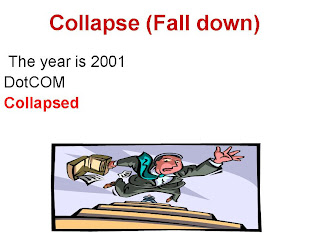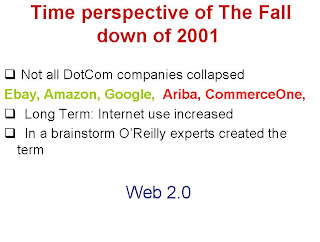In year 2000 there were three leading operating systems families:
Mainframe - The most robust and scalable platform, which was able to execute heterogeneous workloads, UNIX and Windows. The third was the least mature and the least scalable and robust platform. As an experienced expert in IBM Mainframe operating system, I was able to identify Windows 2000 Data Center weaknesses and to think of an add-on product for overcoming some of Windows' limitations. The theoretical solution targeted both Data Centers and Web. I applied to a Seed Venture Capital which checked the document describing the problems and the proposed solution.
The Venture Capital rejected my start up proposal. The only reason for immediate rejection was: "It is not pure Internet solution" i.e. the reason for rejection was possible applicability to Enterprises Data Centers.
I am not arguing that the rejection was false (I checked other start ups ideas for Venture Capitals before my start up proposal. The first question I would ask someone applying with similar idea to mine would be: Do you have access to the Windows operating system source code? I probably would reject the startup idea in case of a negative answer), I am just describing the Dotcom over Hype or illusion prevailed in those Web 1.0 or Dotcom days.
Unsurprisingly, the Dotcom failed or collapsed (that was the reason for choosing the YouTube Domino Fall Down clip to be included in my previous post The taste of Web 2.0).
The fall of Web 1.0 enabled the Web 2.0 phenomena as described in the following images and text.

In year 2001 DotCom collapsed. Many DotCom companies disappeared or shrank dramatically. However, not all Dotcom companies were harmed significantly.
 The companies appearing in green in the image above were not harmed significantly by the DotCom collapse.
The companies appearing in green in the image above were not harmed significantly by the DotCom collapse.For example, Google was established in 1998 and still succeeding.
The companies appearing in red were harmed significantly by the DotCom collapse.
The last bullet depict an example of historical new generation: Software Centered model instead of Hardware Centered model. Some companies did not survive the model change. The most known example is Digital one of the biggest players in the computers industry.
O’reilly is a company which publishes books and e-books and organizes conferences. The participants in this brainstorm were O’reilly experts (including Dale Dougherty the creator of this term) and MediaLive employees.
 Netscape is the representative case of Web 1.0 companies.
Netscape is the representative case of Web 1.0 companies.Its business model is similar to business models of non-Web infrastructure software companies. The company was acquired by AOL prior to the DotCom collapse of 2001
The following images present the classical representative of Web 2.0: Google. The differences between their model and the classical software vendors model as well as Netscape model can be found easily.

The main concept is the Web as a Platform model. No platform control wars as in NetScape model, but adapting to Web infrastructure technologies.
The bullets or parts of bullets marked in red relate to concepts deviating from traditional software vendors' model.
Page Rank is a Recursive Mathematical Algorithm developed by Larry Page as a student in Stanford University. The idea is to assign rank to a page during a search. The rank is based on weighted index. The index takes into account two factors: the number of references to that page and importance.
.
Open Social API is a new initiative by Google for common Application Programming Interface (API) accessing Social Networks and communities' sites.
MySpace, Linkidn, Bebo, Plaxo and Orkut joined to Google.
Non-pure Web 2.0 vendors Oracle and Saleforce.com also joined.


1 comment:
Similar to many organizations, the La - Porte County IT department must
accommodate and support many different departments, each with
a variety of document and record management needs.
In taking close up shots, you can make your subject sharp (not blurred) and
your background blurred. There's a time for that, but the actual writing
needs to be separated.
Post a Comment